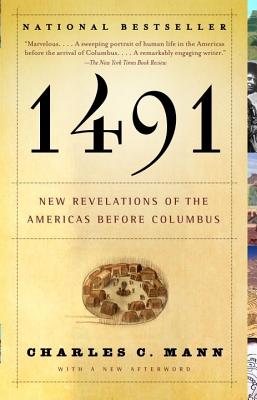“EMPTY OF MANKIND AND ITS WORKS”
The Beni was no anomaly. For almost five centuries, Holmberg’s Mistake the supposition that Native Americans lived in an eternal, unhistoried state- held sway in scholarly work, and from there fanned out to high school textbooks, Hollywood movies, newspaper articles, environmental campaigns, romantic adventure books, and silk-screened T-shirts. It existed in many forms and was embraced both by those who hated Indians and those who admired them. Holmberg’s Mistake explained the colonists’ view of most Indians as incurably vicious barbarians; its mirror image was the dreamy stereotype of the Indian as a Noble Savage. Positive or negative, in both images Indians lacked what social scientists call agency they were not actors in their own right, but passive recipients of whatever windfalls or disasters happenstance put in their way.
The Noble Savage dates back as far as the first full-blown ethnography of American indigenous peoples, Bartolomé de Las Casas’s Apologética Historia Sumaria, written mainly in the 1530s. Las Casas, a conquistador who repented of his actions and became a priest, spent the second half of his long life opposing European cruelty in the Americas. To his way of thinking, Indians were natural creatures who dwelt, gentle as cows, in the “terrestrial paradise.” In their prelapsarian innocence, he believed, they had been quietly waiting -waiting for millennia- for Christian instruction. Las Casas’s contemporary, the Italian commentator Pietro Martire d’Anghiera, shared these views. Indians, he wrote (I quote the English translation from 1556), “lyve in that goulden world of whiche owlde writers speake so much,” existing “simplye and innocentlye without inforcement of lawes.
In our day, beliefs about Indians’ inherent simplicity and innocence refer mainly to their putative lack of impact on the environment. This notion dates back at least to Henry David Thoreau, who spent much time seeking “Indian wisdom,” an indigenous way of thought that supposedly did not encompass measuring or categorizing, which he viewed as the evils that allowed human beings to change Nature. Thoreau’s ideas continue to be influential. In the wake of the first Earth Day in 1970, a group named Keep America Beautiful, Inc., put up billboards that portrayed an actor in Indian dress quietly weeping over polluted land. The campaign was enormously successful. For almost a decade the image of the crying Indian appeared around the world. Yet though Indians here were playing a heroic role, the advertisement still embodied Holmberg’s Mistake, for it implicitly depicted Indians as people who never changed their environment from its original wild state. Because history is change, they were people without history.
Las Casas’s anti-Spanish views met with such harsh attacks that he instructed his executors to publish the Apologética Historia forty years after his death (he died in 1566). In fact, the book did not appear in complete form until 1909. As the delay suggests, polemics for the Noble Savage tended to meet with little sympathy in the eighteenth and nineteeth centuries. Emblematic was the U.S. historian George Bancroft, dean of his profession, who argued in 1834 that before Europeans arrived North America was “an unproductive waste… Its only inhabitants were a few scattered tribes of feeble barbarians, destitute of commerce and of political connection.” Like Las Casas, Bancroft believed that Indians had existed in societies without change except that Bancroft regarded this timelessness as an indication of sloth, not innocence.
Comprehension Questions
1. What was Holmberg’s Mistake?
A. The belief that Indians were incurably vicious barbarians
B. The stereotype that Indians were Noble Savages waiting for Christian instruction
C. The supposition that Native Americans lived in an eternal, unhistoried state
A. Positive images positively impact Native Americans and negative images negatively impact Native Americans
B. Both positive and negative images deny that Native Americans had agency, which is the ability to act on their own
C. It has no impact on present day because his mistake was made a long time ago
Your Thoughts
Vocabulary
4. List any vocabulary words below.

